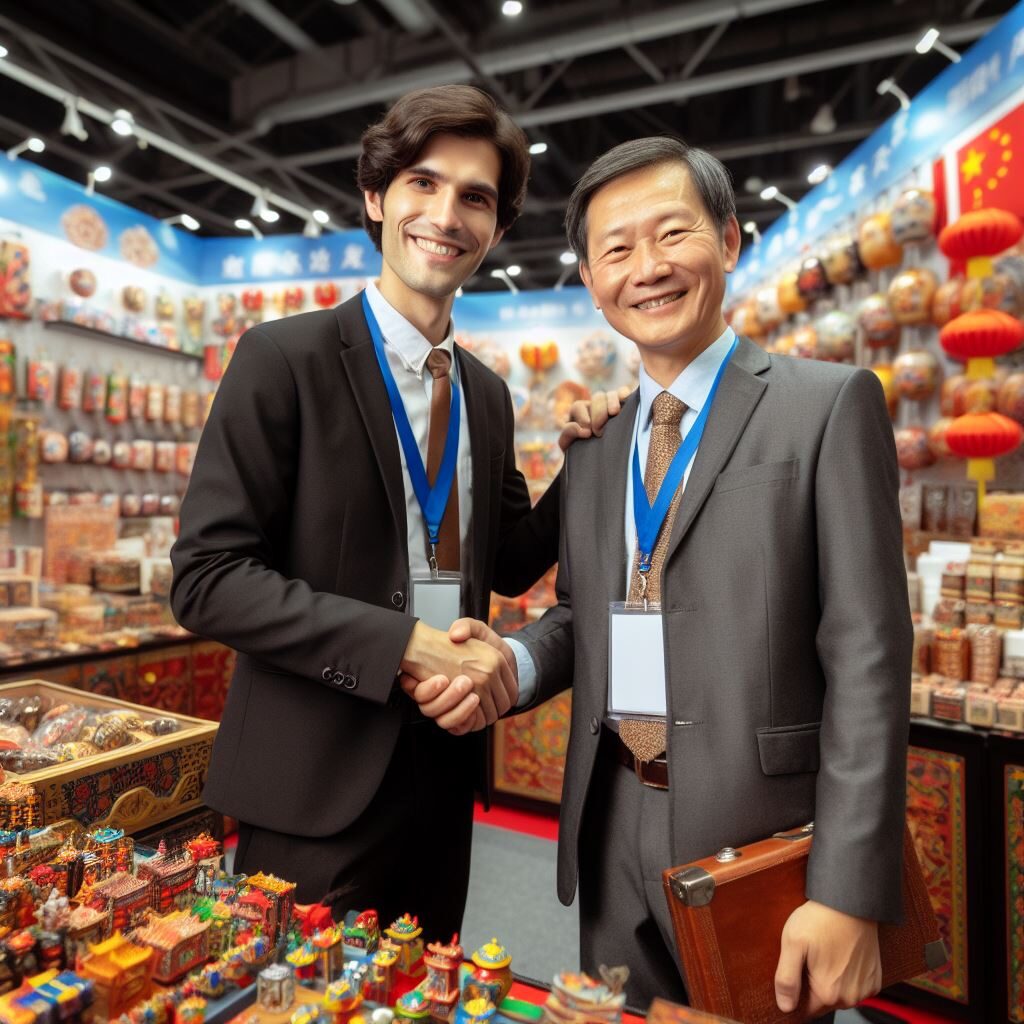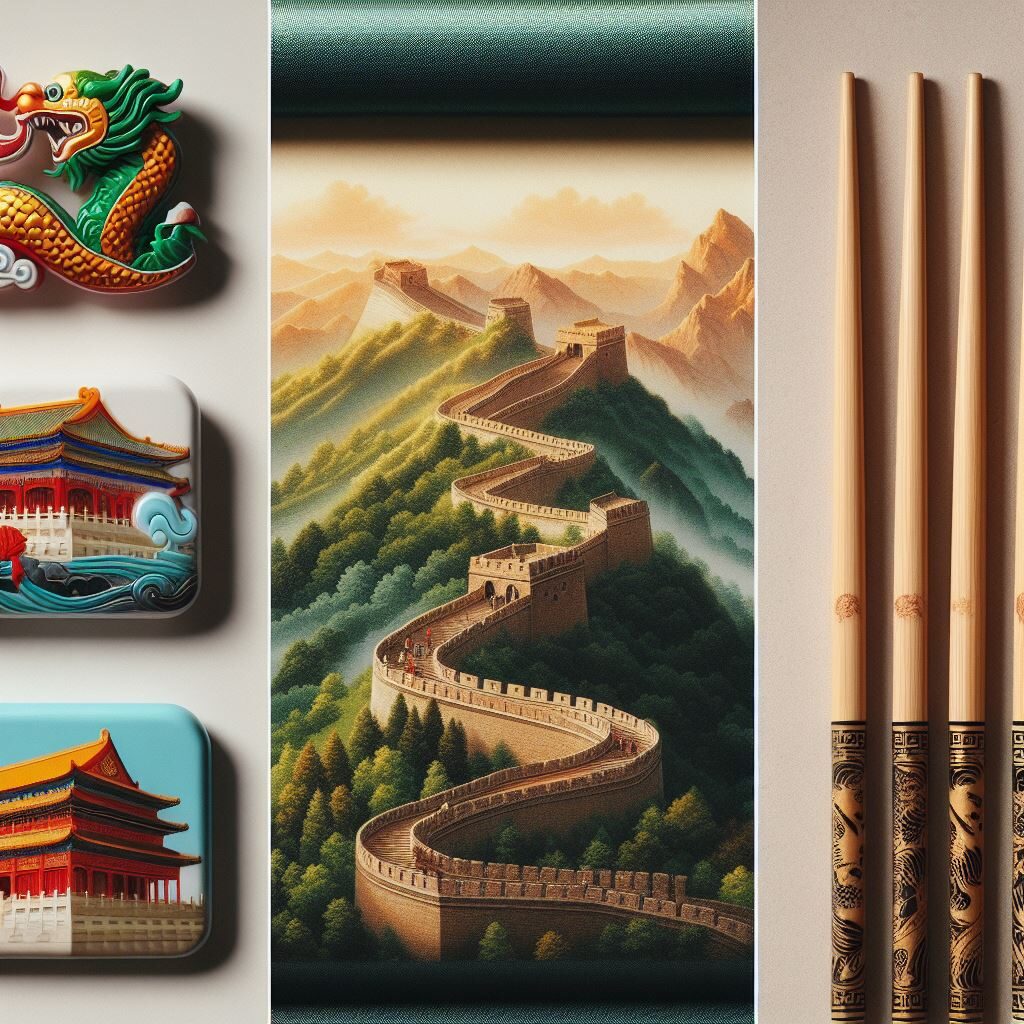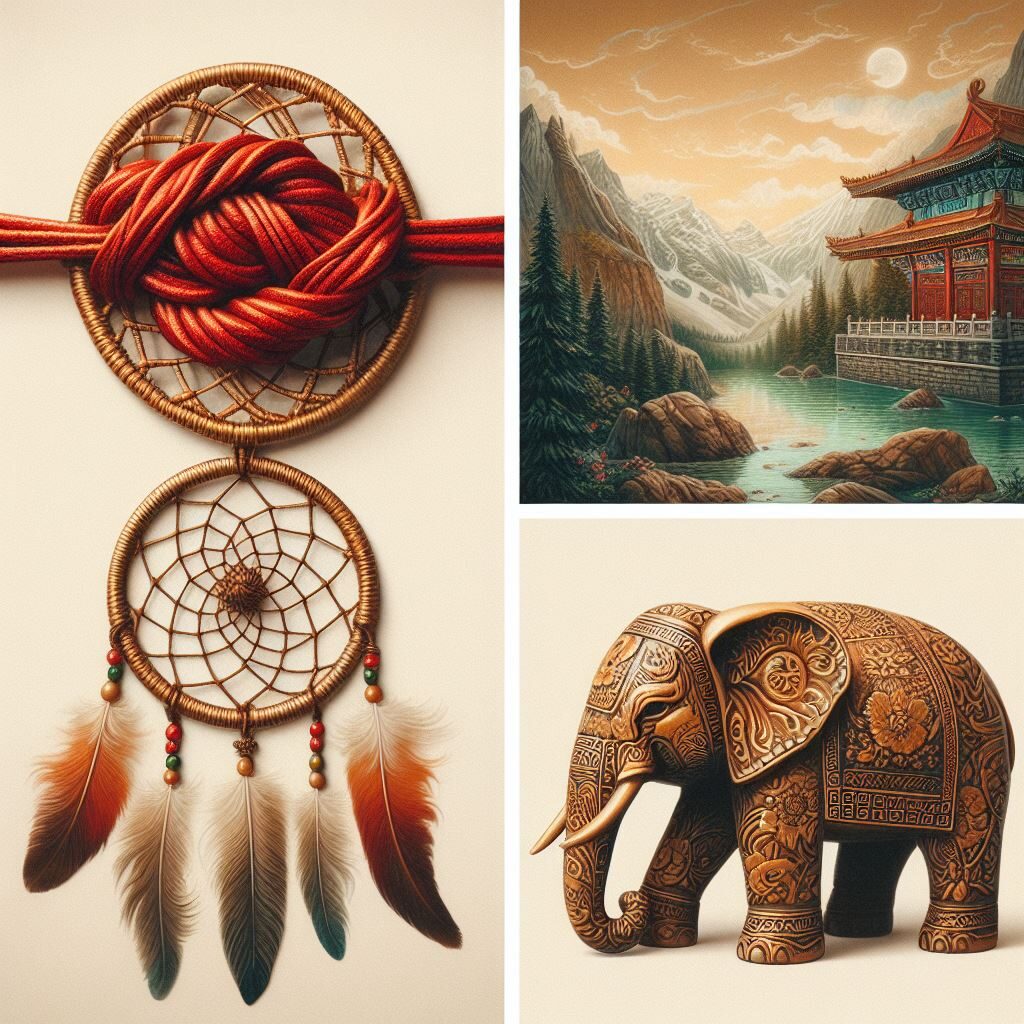Crafting beautiful souvenirs is an art form, but have you ever considered the art of selling them internationally? Souvenirs are more than just mementos; they’re cultural ambassadors, tiny pieces of your heritage presented to the world. However, what resonates with tourists in your home country might not translate across borders. Cultural Considerations for Souvenir Craft Export: Adapting Designs to Suit Foreign Markets will equip you with the knowledge to navigate the exciting world of souvenir exports. Let’s dive into the fascinating world of cultural nuances and discover how to adapt your souvenir designs to win over international tourists!
Demystifying Cultural Symbols: The Secret Language of Souvenirs

Imagine a tourist buying a beautiful silk scarf adorned with elephants. In Thailand, elephants symbolize strength and good luck, but in some cultures, they might represent captivity or bad luck. This is the power of cultural symbols! Understanding their meanings is crucial to avoid unintentional faux pas and ensure your souvenirs resonate with foreign audiences.
Popular Cultural Symbols Around the World:
- Red knots in China: Symbolize good luck and prosperity.
- Dreamcatchers: Believed by some Native American cultures to protect sleepers from bad dreams.
- Feng shui: A Chinese philosophy that emphasizes harmony and balance, often reflected in design elements.
Avoiding Cultural Faux Pas: Understanding Symbol Meanings

Do some research! Before incorporating symbols into your designs, investigate their meanings across different cultures. A quick internet search or consultation with a cultural expert can save you a lot of trouble.
Here’s an analogy: Imagine souvenirs as a conversation. You want your designs to spark positive interactions, not confusion. By understanding cultural symbols, you ensure your souvenirs speak a language tourists understand and appreciate.
Tourist Preferences: Decoding What Souvenirs Sell Where

Tourists come from all walks of life, with diverse tastes and budgets. What sells like hotcakes in Paris might gather dust on shelves in Tokyo. So, how do you cater to these varied preferences?
Top Souvenir Trends by Region
- Europe: Souvenirs that reflect local landmarks, historical figures, and artistic styles are popular choices. Think miniature Eiffel Towers in Paris, or replicas of the Colosseum in Rome.
- Asia: Tourists often seek souvenirs with cultural significance, such as intricate silk garments in China, or hand-carved wooden masks from Bali. Practical items with a cultural touch, like chopsticks with traditional designs, also do well.
- North America: Tourists in North America tend to favor souvenirs that are functional and practical, like t-shirts with funny slogans or keychains featuring iconic landmarks. Souvenirs that tell a story or celebrate local events are also gaining traction.
Catering to Different Tourist Tastes: Budget, Luxury, and Functionality
Beyond regional preferences, consider the spending power of tourists. Budget-conscious travelers might appreciate smaller, more affordable souvenirs like fridge magnets or postcards. Luxury markets, on the other hand, might crave exquisitely crafted pieces that showcase traditional techniques or high-quality materials.
Don’t forget functionality! Souvenirs that double as everyday items are more likely to be purchased and cherished. Think decorative teacups, tote bags with local artwork, or phone cases featuring iconic landmarks.
Legal and Safety Compliance: Ensuring Smooth Sailing for Your Souvenirs

The world of international trade comes with regulations, and souvenir exports are no exception. Knowing the legalities can prevent delays, headaches, and even confiscated merchandise!
Safety Regulations for Different Souvenir Materials:
- Resin fridge magnets: Ensure they meet safety standards for lead content and magnet strength, especially when targeting markets with strict regulations.
- Fragile materials like glass or ceramics: Invest in proper packaging to prevent breakage during shipping.
- Souvenirs containing animal products: Be aware of restrictions on importing animal-based materials like feathers, shells, or certain types of leather.
Export Restrictions and Customs Compliance:
Research export restrictions for your target markets. Certain countries might have limitations on specific materials or cultural artifacts. Always ensure your products have the necessary documentation and comply with customs regulations to avoid delays.
Think of it like preparing for a trip: Research the destination’s visa requirements, pack accordingly, and you’ll have a smooth journey. Following export regulations ensures your souvenirs reach their final destination without any hiccups.
Material Selection: Choosing the Right Stuff for Souvenirs that Travel
The materials you choose for your souvenirs not only impact aesthetics but also durability and sustainability. After all, tourists want keepsakes that can withstand their travels and tell their stories for years to come.
Durability and Sustainability: Materials Built to Last
Durability is key. Opt for materials that can handle the wear and tear of travel. For example, consider using high-quality wood for figurines instead of balsa wood, which is more prone to damage.
Sustainability is becoming increasingly important to eco-conscious travelers. Explore eco-friendly materials like recycled paper for packaging, bamboo for utensils, or natural fibers for textiles. These choices not only benefit the environment but also resonate with a growing segment of the tourist market.
Here’s a metaphor: Imagine your souvenirs as travel companions. You want them to be strong, resilient, and ready to embark on adventures with tourists.
Design and Functionality: Souvenirs that Go Beyond the Fridge Magnet
So you’ve mastered cultural nuances, catered to diverse preferences, and chosen the right materials. Now, let’s talk about design! Think beyond the traditional fridge magnet. Souvenirs that are both beautiful and functional are more likely to capture tourist attention.
Practical Souvenirs: Marrying Form and Function
Tourists appreciate souvenirs that they can use in their daily lives. Think decorative coasters made from local materials, hand-woven scarves that double as beach wraps, or beautifully crafted phone cases. These souvenirs seamlessly blend aesthetics with practicality, ensuring they become cherished keepsakes.
Storytelling Souvenirs: Crafts that Connect on a Deeper Level
Souvenirs can be more than just pretty objects. They can be cultural storytellers, connecting tourists to the essence of your heritage. Incorporate traditional design elements, local stories, or even QR codes that link to information about the craft’s history. These elements create a deeper connection with tourists, making their souvenirs even more meaningful.
Price Optimization: Striking the Perfect Balance for Souvenir Success
Finding the sweet spot between profitability and affordability is crucial. Price your souvenirs too high, and you might scare away budget-conscious tourists. Price them too low, and you might struggle to turn a profit.
Understanding Tourist Budgets: Pricing for Different Markets
Research average tourist spending habits in your target markets. This will help you establish a price range that caters to both budget travelers and those willing to splurge on luxury souvenirs.
Maximizing Profits: Balancing Cost and Value
While affordability is important, don’t undervalue your work. High-quality materials, intricate craftsmanship, and cultural significance all contribute to a souvenir’s value. Clearly communicate this value to potential customers through product descriptions, packaging, and marketing materials.
Think of it like a restaurant menu: There are options for every budget, but the quality and experience justify the price.
Marketing and Promotion: Spreading the Word About Your Cultural Crafts
With your stunning, culturally-sensitive souvenirs ready to take the world by storm, it’s time to spread the word! Marketing your products effectively is essential to attracting international tourists.
Reaching a Global Audience: Online Marketing Strategies
The internet has revolutionized souvenir sales. Create a user-friendly e-commerce website showcasing your products with high-quality photos and detailed descriptions. Utilize social media platforms like Instagram and Facebook to target tourists with visually appealing content and captivating stories behind your crafts.
Partnering for Success: Attracting Wholesalers and Retailers
Partnering with established wholesalers and retailers can significantly expand your reach. Attend trade shows, network with potential partners, and highlight the unique selling points of your culturally-inspired souvenirs.
Imagine your souvenirs as hidden gems. Marketing helps them shine, attracting tourists and propelling your business to new heights.
E-commerce Considerations: Taking Your Souvenir Business Online
Selling souvenirs online opens doors to a global audience, but it also comes with logistical considerations. Mastering these aspects ensures a smooth online shopping experience for your customers.
Setting Up Your Online Shop: Choosing the Right Platform
There are numerous e-commerce platforms available, each with its own features and pricing structures. Research and choose a platform that caters to your specific needs and budget.
Shipping and Payment Processing: Delivering Souvenirs Seamlessly
Offer a variety of secure payment options to cater to international customers. Partner with reliable shipping companies that offer competitive rates and efficient delivery times. Transparency in shipping costs and estimated delivery windows is key to building trust with online shoppers.
Think of your online shop as a welcoming storefront. A user-friendly platform, secure payment options, and efficient shipping create a seamless shopping experience that keeps customers coming back for more.
Vendor Sourcing: Building a Network of Reliable Craft Partners
High-quality souvenirs begin with high-quality materials and skilled craftsmanship. Building strong relationships with reliable vendors is crucial for consistent production and timely delivery.
Finding Quality Manufacturers: Sourcing Resin Crafts and Beyond
Research potential manufacturers, considering factors like quality, turnaround time, and ethical practices. Don’t be afraid to visit workshops and factories to get a firsthand look at their operations.
Ethical Sourcing: Building Relationships with Responsible Suppliers
Look for vendors who prioritize fair labor practices and use sustainable materials. This not only aligns with your values but also resonates with eco-conscious consumers.
Imagine your vendors as teammates on your souvenir journey. Building strong, ethical relationships ensures a reliable supply chain and a successful business.
Brand Building: Creating a Souvenir Brand that Resonates with Tourists
Your souvenirs are more than just crafts; they represent your cultural heritage and brand identity. Crafting a compelling brand story will help you connect with tourists on a deeper level.
Craft a Compelling Story: The Power of Brand Storytelling
Develop a brand story that encapsulates your heritage, design philosophy, and commitment to cultural authenticity. Share this story through your website, social media platforms, and even packaging inserts.
Visual Identity: Packaging that Tells Your Souvenir’s Tale
Packaging plays a crucial role in branding. Opt for attractive and sustainable packaging that reflects your brand identity and cultural influences. Consider incorporating traditional patterns, symbols, or even QR codes that link to your brand story.
Imagine your brand as a character in the souvenir story. A compelling brand story and visually appealing packaging create a memorable first impression and entice tourists to choose your souvenirs.
Conclusion: The Rewards of Culturally-Conscious Souvenir Design
By embracing cultural considerations, you can transform your souvenir business into a global success story. Understanding tourist preferences, adapting designs for different markets, and navigating legalities are all crucial steps in this journey. Remember, your souvenirs are cultural ambassadors, carrying a piece of your heritage to the world




